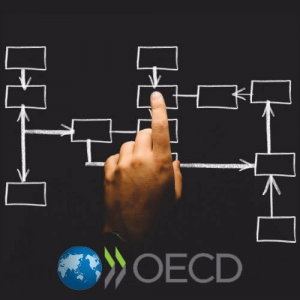
OECD Transfer Pricing Guidelines for Multinational Enterprises and Tax Administrations 2017 (OECD Transfer Pricing Guidelines), there are 3 traditional methods and 2 transactional methods to determine an arm length price.
Traditional transaction methods are:- Compared Uncontrolled Price method (CUP)
- Resale Price method (RSP)
- Cost Plus method (CP)
- Transactional Net Margin method (TNM)
- Profit Split method (PS)
Compared Uncontrolled Price (CUP) method compares price changed for products and services in controlled transaction between related parties, and price that would have been charged if it were a transaction undertaken between independent non-related parties. CUP method can be internal and external. The first one compares prices between distributor an its related customer, and price between the same distributor and its non-related customer. External method determines price between distributor and its related customer, and between another distributor and its independent customer.
Resale Price (RSP) method is based on difference between price at which products were bought and then sold to third party. The resale price less arm’s-length gross margin is considered to be an arm’s-length price. Gross margin shall be adjusted where applicable.
Cost Plus (CP) method is based on mark-up which is added on top of cost incurred by the vendor, it can be manufacturing costs of supplier of product. This mark-up is compared to that which independent third party could have determined in the same type of transaction.
Transactional Net Margin (TNM) method compares net margin earned in controlled transaction with net margin earned in transaction undertaken between unrelated parties.
Profit Split (PS) method apportions the profit to participants of transaction and compares this split of profit between associated parties and independent participants of transaction.
All the methods are based on comparability. Comparability factors include characteristics of goods and services, functional analysis, terms of agreement between parties, market circumstances, business strategy of participants.
In terms of product comparability, the CUP method has the highest level, since this method is intrinsically based on comparability of prices. The CUP method is difficult to apply since it requires the highest comparability.
The Resale Price and Cost Plus methods have high level of comparability as for the both methods a gross profit margin is benchmarked: gross profit margin on sales for RP, and gross profit margin on costs for CP. Those methods are considered less difficult than CUP to apply, though they are still complex due to high comparability.
Transactional profit methods are deemed to have medium level of comparability as they mostly focus on profit margins (overall profit for PS method, and net profit for TNP method).
The objectivity of the transfer pricing methods depends much on the field of their application. The methods are selected based on which method is the most appropriate in the case under consideration. Traditional methods are regarded as he most direct methods in establishing arm’s- length price between parties. When both traditional and transactional methods can apply, the traditional shall prevail. CUP method usually takes precedence over other traditional methods (OECD Transfer Pricing Guidelines, paragraph 2.15).
The CUP method is most objective. It is applicable for most types of transactions, especially for the commodities traded in free market. It reaches the highest level of objectivity in case of homogeneous products, market, circumstances, companies, their marketing policy. It looses objectivity with every adjustment.
The RP method is mostly appropriate for marketing and distribution operations. Its objectivity depends on knowledge of fair resale price margin, selling and other operation expenses of seller. The Cost Plus method is mostly used for sale of the goods from manufacturer to retail distributor, or when semi-finished goods are transferred between related parties. Its objectivity is based on determination of fair mark-up, and it required analysis of type of costs which can be classified in different manner in different accounting systems.
The Profit Split is considered to be the most applicable in case of highly integrated activities when each party gives unique contribution to value of transaction. According to this method, profit shall be split on economically valid basis, understanding of which is the key condition of its objectivity. Although being the most popular, the TNM method can not be regarded as highly objective sine it can be affected by factors outside transfer pricing. Base on comparison of net margins of controlled and uncontrolled transactions, it is looses its objectivity due to one-sided analysis (this method is less focused on market conditions and economic climate). This method is appropriate for back office management services, and services under low-risk research and development contracts.
Taxpayer shall be prepared to explain why the method he applied for his transactions is the most objective and appropriate. The court case of 2009 DSG v HMRC can be mentioned in this connection, where it was held that proceeding from nature of business, the company should have used the profit split method instead of compared uncontrolled price method in spite of this method being the priority.